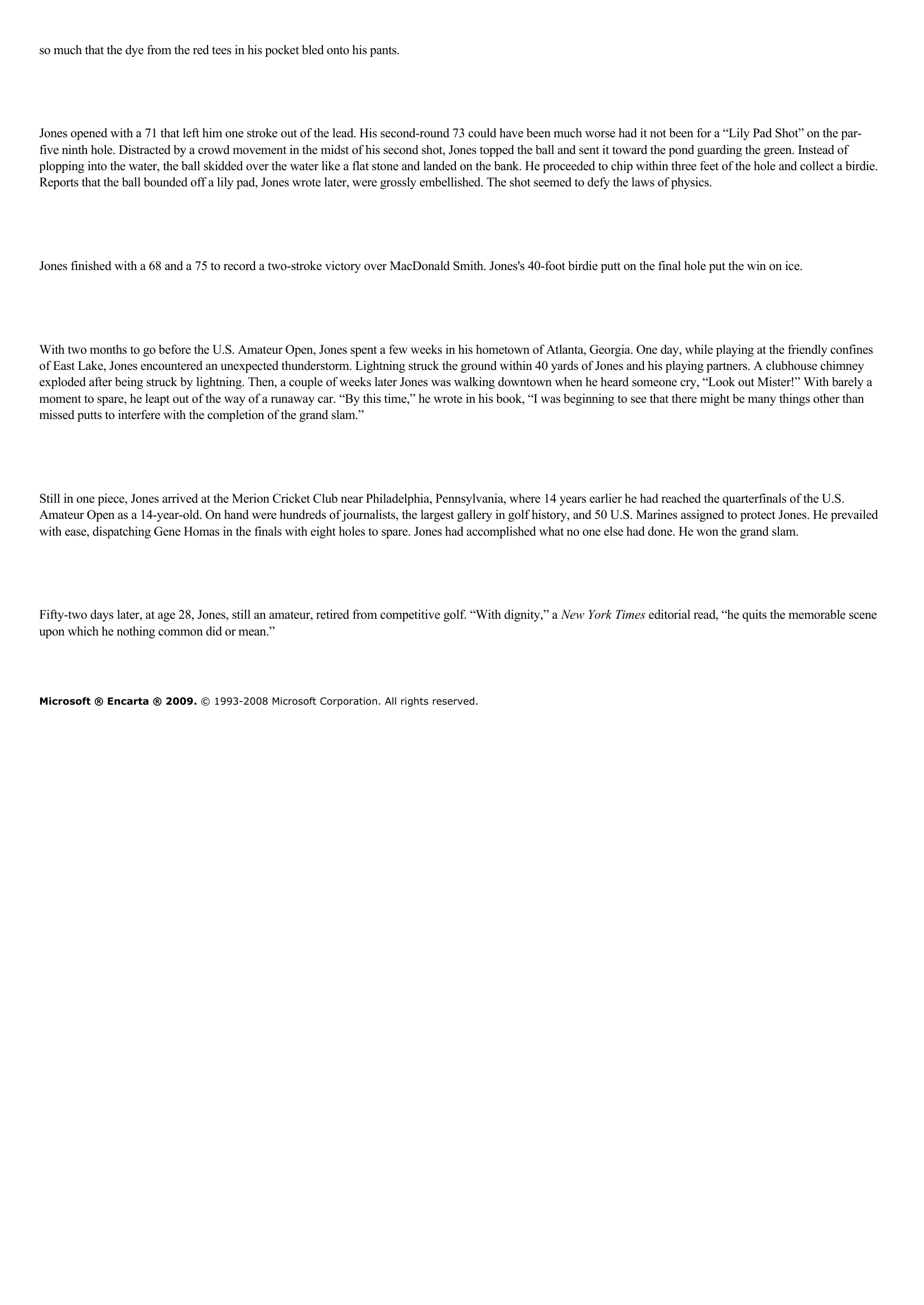Bobby Jones Is First Golfer To Win Grand Slam.
Publié le 14/05/2013

Extrait du document
«
so much that the dye from the red tees in his pocket bled onto his pants.
Jones opened with a 71 that left him one stroke out of the lead.
His second-round 73 could have been much worse had it not been for a “Lily Pad Shot” on the par-five ninth hole.
Distracted by a crowd movement in the midst of his second shot, Jones topped the ball and sent it toward the pond guarding the green.
Instead ofplopping into the water, the ball skidded over the water like a flat stone and landed on the bank.
He proceeded to chip within three feet of the hole and collect a birdie.Reports that the ball bounded off a lily pad, Jones wrote later, were grossly embellished.
The shot seemed to defy the laws of physics.
Jones finished with a 68 and a 75 to record a two-stroke victory over MacDonald Smith.
Jones's 40-foot birdie putt on the final hole put the win on ice.
With two months to go before the U.S.
Amateur Open, Jones spent a few weeks in his hometown of Atlanta, Georgia.
One day, while playing at the friendly confinesof East Lake, Jones encountered an unexpected thunderstorm.
Lightning struck the ground within 40 yards of Jones and his playing partners.
A clubhouse chimneyexploded after being struck by lightning.
Then, a couple of weeks later Jones was walking downtown when he heard someone cry, “Look out Mister!” With barely amoment to spare, he leapt out of the way of a runaway car.
“By this time,” he wrote in his book, “I was beginning to see that there might be many things other thanmissed putts to interfere with the completion of the grand slam.”
Still in one piece, Jones arrived at the Merion Cricket Club near Philadelphia, Pennsylvania, where 14 years earlier he had reached the quarterfinals of the U.S.Amateur Open as a 14-year-old.
On hand were hundreds of journalists, the largest gallery in golf history, and 50 U.S.
Marines assigned to protect Jones.
He prevailedwith ease, dispatching Gene Homas in the finals with eight holes to spare.
Jones had accomplished what no one else had done.
He won the grand slam.
Fifty-two days later, at age 28, Jones, still an amateur, retired from competitive golf.
“With dignity,” a New York Times editorial read, “he quits the memorable scene upon which he nothing common did or mean.”
Microsoft ® Encarta ® 2009. © 1993-2008 Microsoft Corporation.
All rights reserved..
»
↓↓↓ APERÇU DU DOCUMENT ↓↓↓
Liens utiles
- Bobby Jones I INTRODUCTION Bobby Jones (1902-1971), American amateur golfer, winner of the grand slam of golf in 1930 and founder of the prestigious golf tournament, the Masters.
- Rod Laver Rod Laver, born in 1938, Australian tennis player, the only player to win the grand slam of tennis twice (as an amateur in 1962 and as a professional in 1969).
- Grand Slam - Sport.
- Bobby Jones.
- Gewinner der Grand-Slam-Turniere (Herren).

































